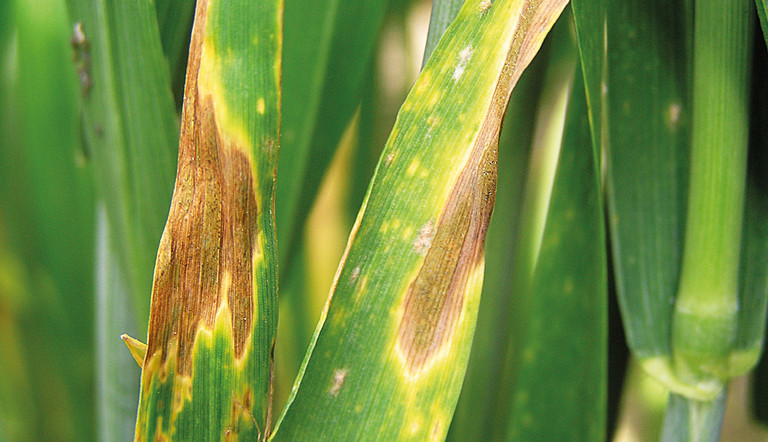
Power-up disease control to protect cereal returns

“The ongoing effects of the war in Ukraine and global factors including exchange rate fluctuations and volatile weather patterns means many in the industry are expecting cereal prices to remain relatively buoyant, at least for the short-term,” Mr Bailey explains. “Growers should therefore ensure their crops are properly protected this spring, not only to safeguard yields, but also to ensure they achieve the quality needed for milling bonuses and malting premiums.”
Mr Bailey recommends a balanced approach to crop protection, with the use of cultural and integrated disease control tactics used alongside chemical measures: “Key cereal diseases such as septoria and rusts in wheat and ramularia and rhynchosporium in barley can be difficult and costly to control,” he explains, “especially as the erosion of the efficacy of many single site active ingredients means these fungicides will struggle to provide effective curative action once diseases have taken hold.
“It’s therefore essential to stay ahead of infection by using cultural controls to reduce the spread of diseases and by applying a mix of alternating active ingredients and modes of action throughout the season. The addition of the multi-site fungicide, folpet, provides a cost-effective way of powering-up programmes to ensure crops are protected from the outset.”
Folpet has historically been used to provide protection against rhynchosporium in barley and septoria in wheat and gives useful added protection against rusts. For 2023, it is also approved for use against ramularia and net blotch in barley.
“The latest data from 54 trials conducted over a period of four years suggests that, based on a wheat price of £220 per tonne, the inclusion of folpet in spring fungicide programmes will deliver a five to six-fold return on investment by increasing yields by an average of 0.265t/ha,” Mr Bailey claims. “That’s as a result of prolonged green leaf retention which results in better grain quality and yield improvements of up to 0.6t/ha.
“With the recent addition of net blotch and ramularia to its label, folpet’s scope of advantage is now even more wide-ranging, making it a key component in barley crops being grown for the malting market.”
Application timings
To control septoria in wheat, Mr Bailey explains that the key time to include folpet is at T1 when it will boost protection and help crops to stay ahead of the disease. “Using folpet at T1 will help in all scenarios to avoid the need for curative activity,” he explains. “A subsequent application at T2 will maintain protection and help to keep the upper canopy greener for longer, thereby enabling the crop to capture more available sunlight and translate this through to yield benefits.
“In high risk septoria situations, such as where a susceptible variety has been drilled early, protection should be brought forward by applying folpet at the T0 timing, with subsequent applications made at T1 and T2 to power up the programme and provide season-long protection.”
For the control of ramularia in barley, the key time to include folpet is at T2, “but it can also be used in a programmed approach (at T1 and T2) which adds both rhynchosporium and net blotch control as well as improved greening,” Mr Bailey says.
Mr Bailey also reminds growers that the inclusion of folpet helps to protect and prolong the efficacy of single site actives against resistance. He also advises that growers can power-up their fungicide programmes by switching from a standard formulation of prothioconazole to one of a higher quality: “Prothioconazole is widely used against a range of wheat, barley, oat, rye and oilseed rape diseases, but not all products are created equally,” he claims.
“ADAMA’s straight prothioconazole fungicides, SORATEL and MAGAN, benefit from a unique formulation which uses a built-in adjuvant to enhance uptake and a solvent which improves the active’s movement through plants once absorbed. This ‘Asorbital’ formulation technology also promotes rain-fastness and, gramme-for-gramme, consistently outperforms other prothioconazole formulations in terms of cereal and OSR disease control.”

